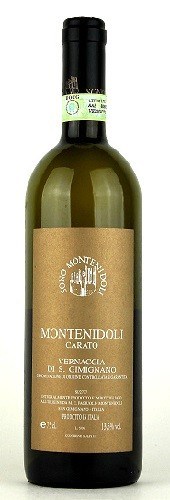Ever wonder why pre-20th century children’s fiction is so strangely gothic and brutal?
 Photo by Kelsey Knight on Unsplash
Photo by Kelsey Knight on Unsplash
It’s because it was never intended to entertain them. The stories were largely morality lessons, meant to impress consequence into young minds via easily digestible (and memorizable) literary snacks.
The protagonists of those stories invariably paid a price, sometimes the ultimate one, for their transgressions, and the audience of freshly tucked-in kids would presumably drift towards an anxious sleep, punctuated by the twitches of someone who is dreaming about getting deservedly eaten by wolves.
The concept of children’s literature – the kind they would actually enjoy – was foreign to Carlo Collodi when he wrote the first version of Pinocchio in 1883. In the original story, the Fox and Cat take the puppet/boy to dine at the “Red Prawn Inn” before betraying him and leaving him to hang, where he justly dies because of his many faults. Paw Patrol it was not.
An enterprising publisher convinced Collodi to change the story so that Pinocchio is saved by the blue fairy, and returns home to become a real boy. The new version was incredibly successful, and ushered in a new genre of children’s stories that actually made kids feel good when they were over.
It is strange indeed that the “Red Prawn” (“Gambero Rosso” in Italian) would become the name of a food and wine publication, but that’s what happened in 1986, and it has since become the authoritative critical voice in Italy, carrying more weight with many Italians than Parker or Spectator. The Gambero Rosso is Italians rating Italian wine for Italians, and instead of using the 100 point scale, they award uno, due or tre bicchieri (one, two or three glasses) that roughly translate to Bronze, Silver and Gold. The majority of wines submitted don’t get any bicchieri at all.
Gambero Rosso came through Vancouver a couple weeks ago, showcasing some of its Tre Bicchieri selections, but here are a couple of top tier wines that they didn’t pour that day:
 Montenidoli “Carato” Vernaccia di San Gimignano 2010, Tuscany. Although the white grape Vernaccia is found in pockets all over Italy, it’s in the hilltop town on San Gimignano, which looks ripe for a dragon attack, where it truly shines. Grown in sandstone-rich vineyards and coming in oaked or unoaked styles (this “Carato” is aged in neutral oak), Vernaccia di San Gimignano is perhaps the premium Tuscan white wine, and the wines produced by Sergio Muratori, who took over the Montenidoli estate – fallow for 20 years after WW2, are at the top of the heap. Floral, with checked minerality and flashes of tropical fruits, the palate is rich and creamy but pulls together beautifully at the end with an expressive, kinda explosive finish. If you’re a fan of Italian whites, stop reading about this and start drinking it. Seriously. Tre Bicchieri – Gambero Rosso, $53.99 +tax
Montenidoli “Carato” Vernaccia di San Gimignano 2010, Tuscany. Although the white grape Vernaccia is found in pockets all over Italy, it’s in the hilltop town on San Gimignano, which looks ripe for a dragon attack, where it truly shines. Grown in sandstone-rich vineyards and coming in oaked or unoaked styles (this “Carato” is aged in neutral oak), Vernaccia di San Gimignano is perhaps the premium Tuscan white wine, and the wines produced by Sergio Muratori, who took over the Montenidoli estate – fallow for 20 years after WW2, are at the top of the heap. Floral, with checked minerality and flashes of tropical fruits, the palate is rich and creamy but pulls together beautifully at the end with an expressive, kinda explosive finish. If you’re a fan of Italian whites, stop reading about this and start drinking it. Seriously. Tre Bicchieri – Gambero Rosso, $53.99 +tax
 Castello di Radda Chianti Classico Riserva 2012, Tuscany, Italy. More serious than Latin Class, this Chianti Classico Riserva aims well above its station, cellar-wise. Frame-forward and conservative on the nose, the telltale licorice and red berries emerge with some coaxing (and decanting/shaking), followed by some baking spice and vanilla notes. After a couple of hours open, all of the shy flavours start to dance with each other, but the post-palate structure plays Stairway To Heaven and brings the dance to a close. Impressive and austere now, this old-school Chianti starts to sing in 2019, I reckon. Tre Bicchieri – Gambero Rosso, $38.99 +tax
Castello di Radda Chianti Classico Riserva 2012, Tuscany, Italy. More serious than Latin Class, this Chianti Classico Riserva aims well above its station, cellar-wise. Frame-forward and conservative on the nose, the telltale licorice and red berries emerge with some coaxing (and decanting/shaking), followed by some baking spice and vanilla notes. After a couple of hours open, all of the shy flavours start to dance with each other, but the post-palate structure plays Stairway To Heaven and brings the dance to a close. Impressive and austere now, this old-school Chianti starts to sing in 2019, I reckon. Tre Bicchieri – Gambero Rosso, $38.99 +tax
Written by Jordan Carrier, Vintage Room Consultant at Everything Wine – River District.


